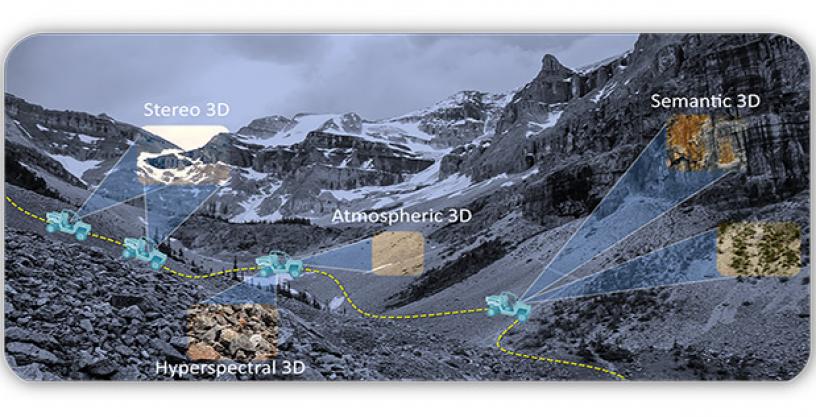
Invisible Headlights teams aim to discover what information can be recovered from ambient thermal emissions and create new solutions for passive 3D vision
Jul 12, 2021
DARPA has selected four industry and university research teams for the Invisible Headlights program, which seeks to determine if it’s possible for autonomous vehicles to navigate in complete darkness using only passive sensors.
Current autonomous systems require active illumination to navigate in the dark (headlights, lidar, or some other emitting sensor), but these active signatures can be detected by adversaries at long ranges. The Invisible Headlights program aims to eliminate this vulnerability by discovering how to transform the ambient thermal light present in all environments into a totally passive 3D sensor accurate and fast enough to support autonomous navigation. Researchers will explore and quantify the information contained in these ambient emissions and then create new sensors and algorithms to exploit that information.
The following research teams will address these challenges:
- Areté Associates, Northridge, California, will perform virtual analyses to understand the ambient spectral and polarimetric infrared environment and develop low-contrast-capable 3D vision algorithms.
- Kitware, Inc., Clifton Park, New York, will use customized, multi-band hyperspectral infrared cameras combined with artificial intelligence and machine learning algorithms to estimate local 3D scene structure and semantics for navigation.
- A team led by the Massachusetts Institute of Technology, Cambridge, Massachusetts, is working to scale superconducting nanowire single photon detector (SNSPD) technology into a very low noise infrared sensing array.
- Purdue University, West Lafayette, Indiana, is developing new types of ultrafast, spin-based sensors and 3D vision approaches that exploit properties of the ambient thermal environment.
“These teams are pursuing innovative approaches to exploit the infrared spectrum,” said Joe Altepeter, Invisible Headlights program manager in DARPA’s Defense Sciences Office. “They are exploring ways to capture more scene information using new devices, improved algorithms, and increased measurement diversity.”
In addition, a government team led by the Army C5ISR Center’s Night Vision and Electronic Sensors Directorate (NVESD) is accelerating the research teams’ work by assembling an unprecedented set of ground hyperspectral and polarimetric imagery with associated 3D ground truth.
During Phase 1, program performers are tasked to study whether thermal emissions contain sufficient information to enable autonomous driving in very dark conditions. In Phase 2, teams are tasked to design and test sensors and algorithms to show that real systems can measure enough information for 3D vision. The final phase will build and test passive demonstration systems that will be compared with active sensors in field tests.
Invisible Headlights technology could extend the types of environment and missions in which autonomous assets operate – at night, underground, in the Arctic, and in fog. More fundamentally, a deeper understanding of the information contained in ambient thermal emissions will inform future applications that exploit infrared light.
Additional information on the Invisible Headlights program is available at: https://www.darpa.mil/program/invisible-headlights.
# # #
Media with inquiries should contact DARPA Public Affairs at outreach@darpa.mil
Associated images posted on www.darpa.mil and video posted at www.youtube.com/darpatv may be reused according to the terms of the DARPA User Agreement, available here: http://go.usa.gov/cuTXR.
Tweet @darpa
